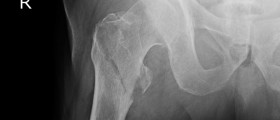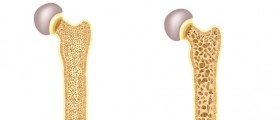Types of Wrist Fractures
Most injuries to the wrist are fractures, in fact, three-fourths of all injuries of the wrist can be classified as fractures.
In order to treat a fracture properly it must be diagnosed accordingly.
There are several types of fractures: simple, compound, comminuted, and greenstick.
In order for a fracture of the bone to be considered a compound fracture, the bones do not have to be coming out through the skin, which is a common misconception.
If the bone is fractured and the skin surrounding it is broken as well, this is a compound fracture.
There are several common types of wrist fractures; Colles’ fracture, Smith’s fracture, Scaphoid fracture, Barton’s fracture, Chauffeur’s fracture, Greenstick fracture, and a fracture of the ulnar styloid.
Management of Fractures
There are several key points to managing a fracture. The airways must be assessed, as does breathing and circulation. A painkiller can be taken while the patient is waiting for an X-ray.
A temporary splint can also be put on the wrist to keep the wrist from moving.
Once the break has been assessed then the doctor will recommend the proper course of action, which can include everything from a simple cast to surgery for reconstructing the wrist.
It is important that the wrist is immobilized as well so that the bones do not move once they are reassembled properly so that they can heal correctly.
Complications
Some other ones include avascular necrosis, which is when the blood supply enters the scaphoid near the wrist. In such a case, the fractures can interrupt the blood supply to this part of the scaphoid, which can result in avascular necrosis and can later lead to nonunion and arthritis.
Another possible complication is reduced grip strength and a reduced range of motion for the wrist.
Osteoarthritis of the radiocarpal joint is another possible complication.
The median and/or ulnar nerves can be damaged in a wrist injury. There can also be signs of acute carpal tunnel syndrome.
Compartment syndrome can also occur in cases of excessive swelling of the wrist.
There is also a chance of deformity in the healing process if the bones were not placed to heal correctly. This is a very serious complication and can result in long-term loss of mobility and function. Such cases can also lead to chronic pain.
When the bones are not put back together correctly to heal, a malunion or nonunion of the bones can also occur, especially with more serious fractures.
Arthritis is also a common complication that can result later.
Reflex sympathetic dystrophy is another common complication.
- The WRIST enrolled a total of 304 participants, of whom 8 casting group participants were later found to be ineligible and were excluded from the analysis, leaving 296 participants.
- Randomized participants’ mean (SD) age was 68 (7.2) years, 163 (87%) were female, and 165 (88%) were white.
- Casting participants’ mean (SD) age was 75.6 (9.6) years, 93 (84%) were female, and 85 (85%) were white.
- The most common type of complications varied by treatment.
- Twelve of 65 participants (18.5%) in the internal fixation group reported a median nerve compression, while 16 of 26 participants (25.8%) who received external fixation and 13 of 56 participants (23.2%) who received pinning sustained pin site infections.
- Compared with the internal fixation group, complication rate for any severity complication was higher in participants who initially received casting (adjusted rate ratio, 1.88; 95% CI, 1.22-2.88), whereas the rate for moderate complications was higher in the external fixation group (adjusted rate ratio, 2.52; 95% CI, 1.25-5.09).


















Your thoughts on this
Loading...